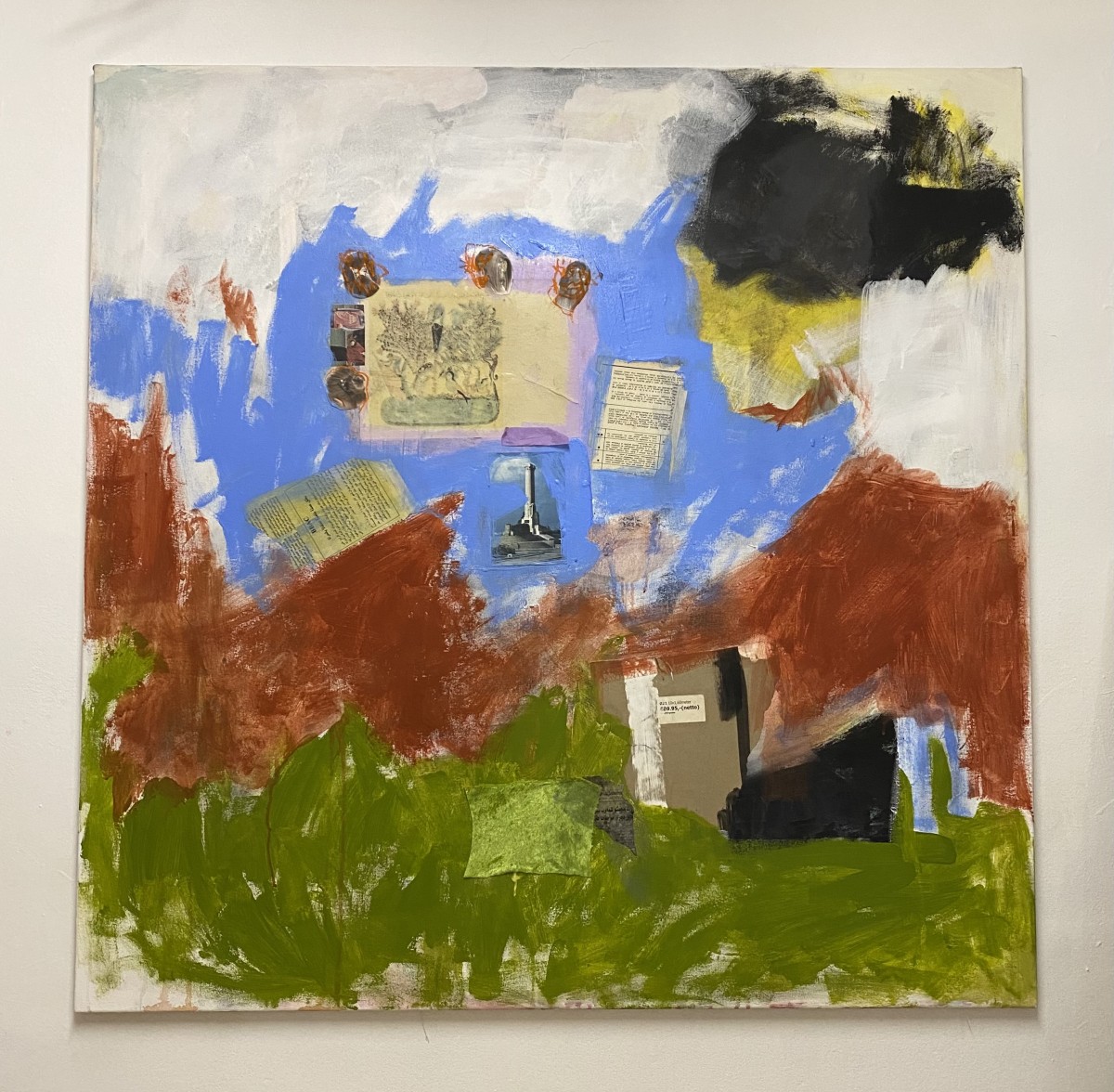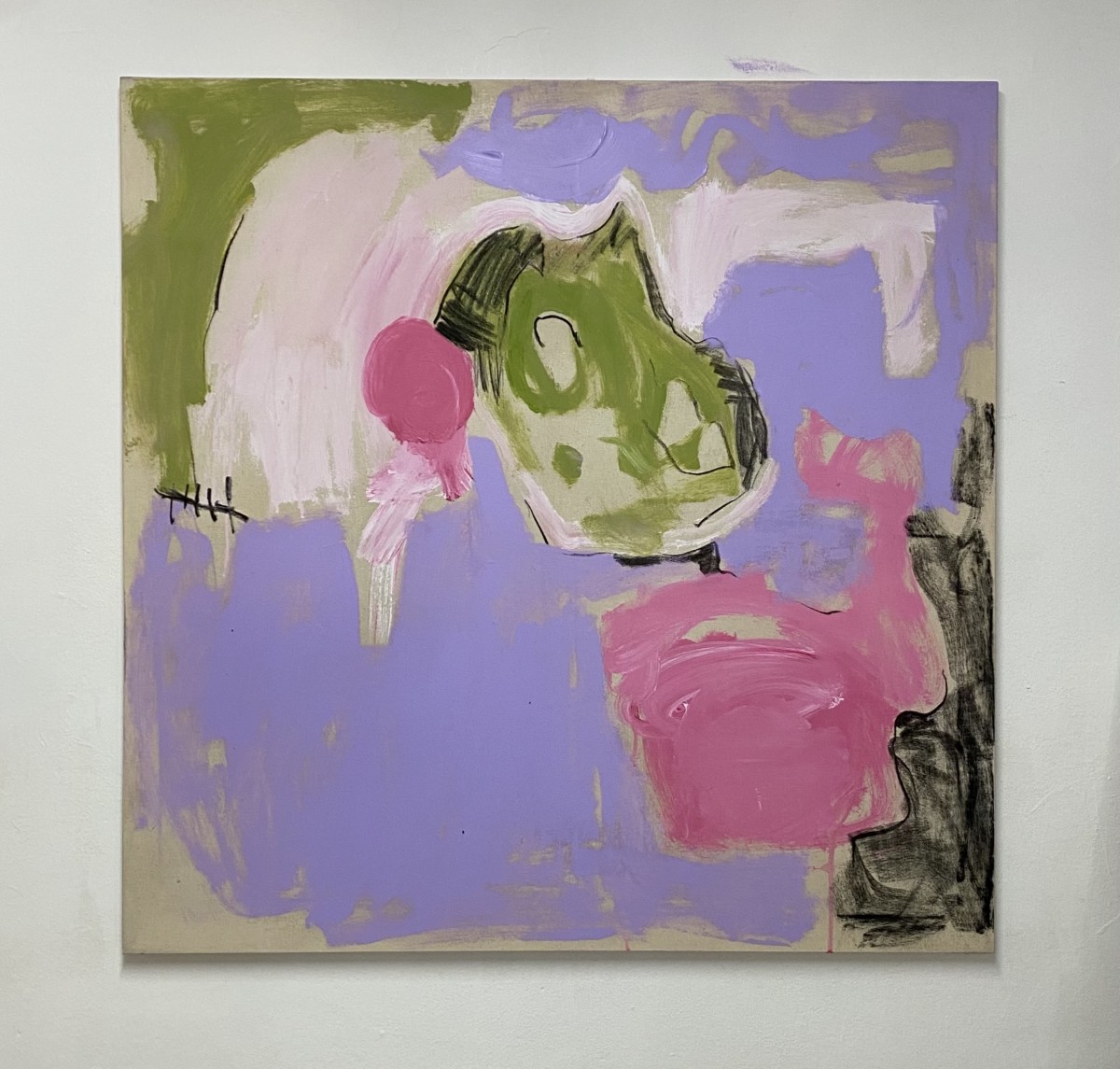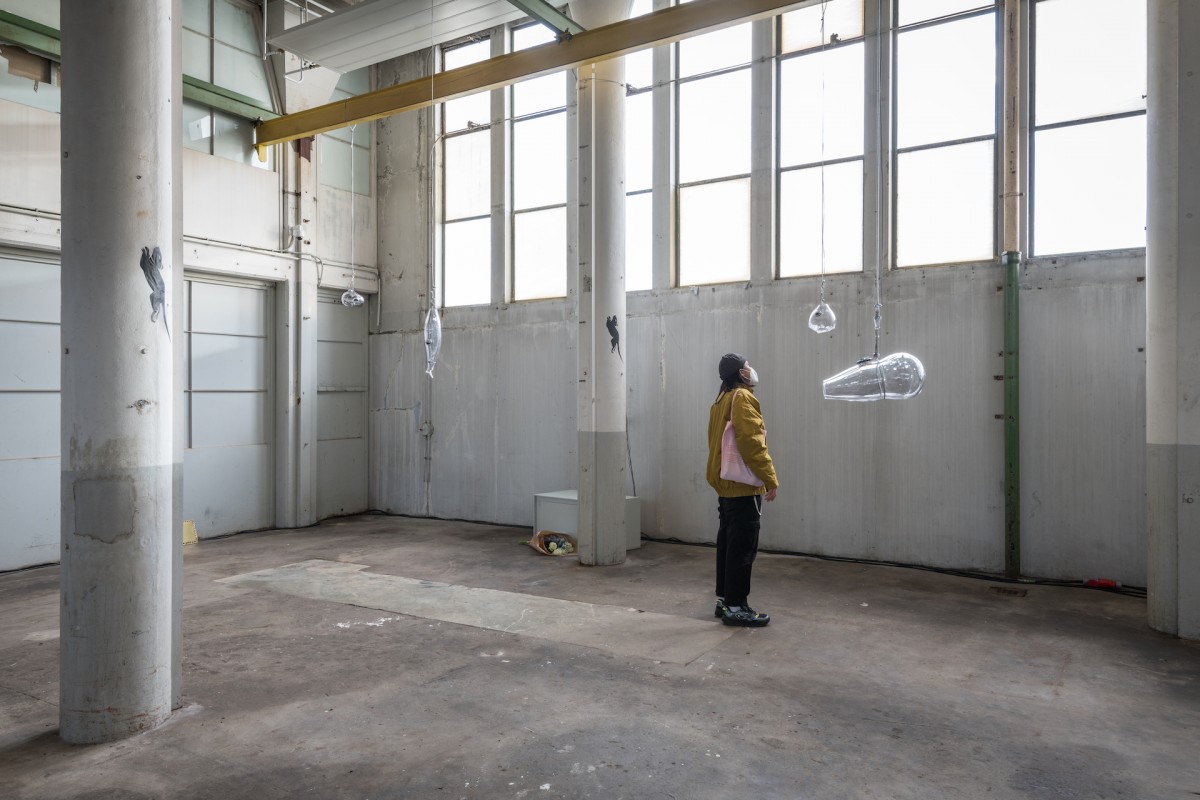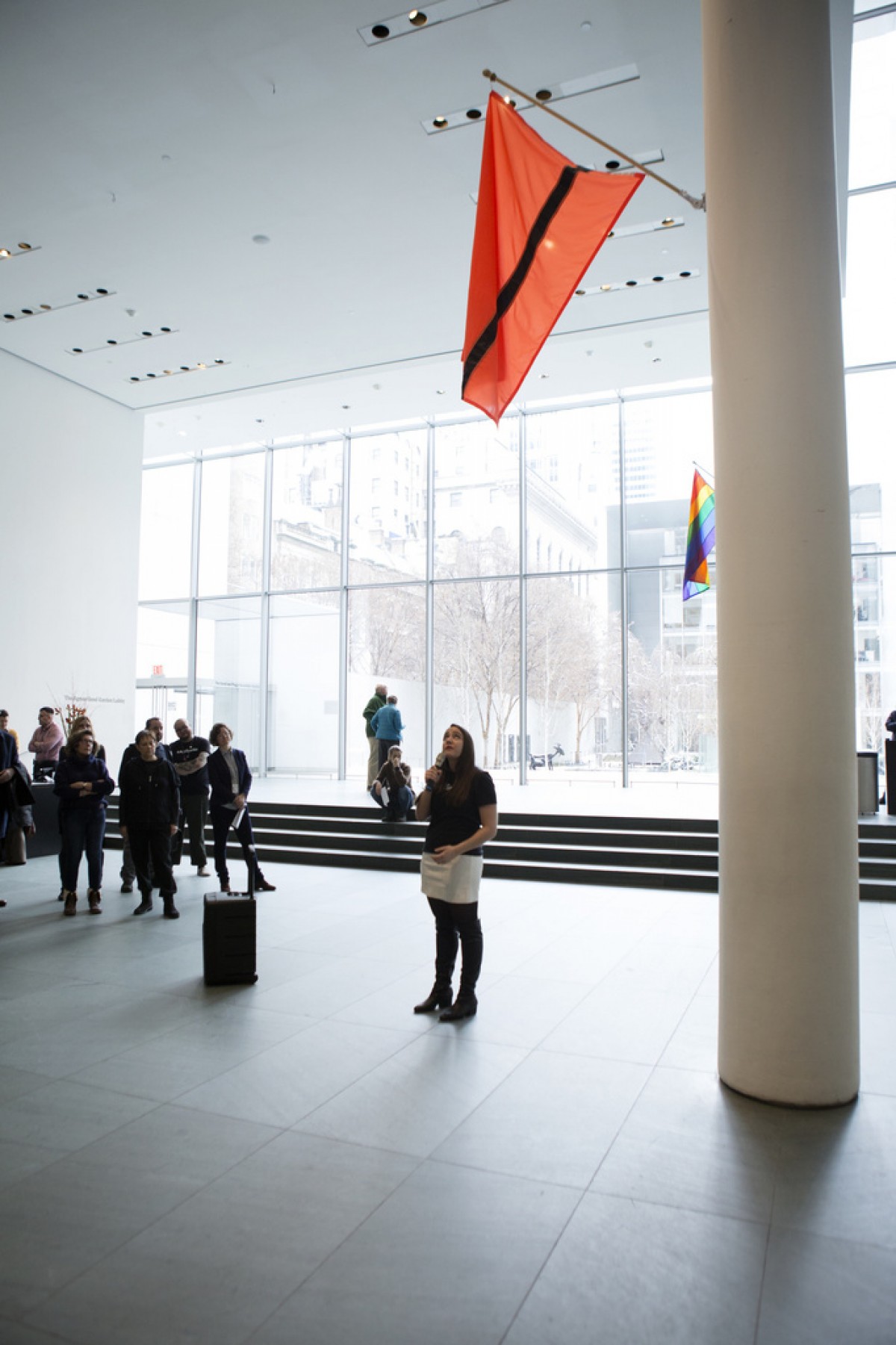Yara Said: Sound as a Carrier Bag of Memories and Traumas
Interview with a participant of Underexposed – Sonic Acts’ mentoring programme for young artists
The following interview comes from the second issue of Ecoes
, a periodic magazine from Sonic Acts about art in the age of pollution. Read this and much more in print by ordering a copy from our webshop.
Sonic Acts: Can you tell us about Salwa – ‘an anti-institutional platform’ you have co-founded – and also about your perspective on being both a practising artist and a cultural organiser in these strange times?
Yara Said: These strange times we live in are not new to me! I had to deal with a similar kind of scarcity when I studied Fine Arts at the University of Damascus. Resources were in short supply at the school, so we created a community in order to share experiences and learn from one another. I feel I have learned a lot about collectivity and caring for each other as curators, organisers and artists in times of difficulties. When I moved to the Netherlands six years ago, I felt the need to provide for artists like myself – immigrants and refugees.
I founded the Salwa Foundation with the aim of creating a community similar to the one we had in Damascus.
[1] Salwa is an Amsterdam-based platform that designs programmes for emerging artists with a migrant background. We want to amplify multiple artistic voices and provide an environment where they have the freedom to tell their stories and think about their position in the artistic field. We programme
workshops,
reading circuits and
cultural activities, and collaborate with Dutch and international institutes. At the heart of Salwa is a community of artists that care about the future and want to make a positive change in the art world, which is hard to penetrate when one has to deal with (foreign) language and historical barriers. In my practice, both as an artist and an organiser, I always found myself drawn to the act of hospitality, not only in the literal act of saying ‘here is a space’, but on a more complex level. Modern organisational approaches strive for transparency and inclusivity, but often come up against bureaucratic constraints. But what if the approach started with a generous act of offering a space to artists and letting them decide on their own creative path?

Yara Said, LandEscape, 100x120 cm, mixed media on canvas, 2021. Courtesy of the artist.

Yara Said, Bach in C Minor, 100x100 cm, mixed media, 2020. Courtesy of the artist.
The starting point for my work are my daily experiences. The research process can unfold from pop culture imagery, news channels or anything on YouTube; visual works, literature and poetry also play a big part in my process. Turning experience into sound, text or paintings is embedded in time and patience. In my paintings I use the technique of collaging, so I have a habit of constantly collecting things. From found documents to newspapers, printed photographs to stills or texts, the found imagery is always vivid in my paintings, functioning as a nostalgic and melancholic act. I believe that objects possess a strong narrative through the way they exist.
I usually start several projects simultaneously and when one of them is ripe enough, I focus my attention on that. During the work process, I tend to be very critical, posing questions about the work that eventually lead to answers. And, of course, I invite a lot of feedback from my friends!

Yara Said, Sonic Failure: Glass Sculpture, Sandberg Instituut Graduation Exhibition, Het HEM, Amsterdam, 2020.
Photo by Sander van Wettum.
SA: Could you unpack some of the ideas that you are researching at the moment?
YS: I am reading and thinking about noise within urban structures. For example, I did a long-term research about jet fighters, which are used as weapons of war, and I am fascinated by the noise they produce. I want to know what effect the noise created by war artillery has on the human body. I am interested in knowing how bodies encapsulate fear. When I was young, my grandmother told me about jet fighters that used to fly over her house in our hometown of Sweida in Syria. My mother was about three years old at the time. I used to imagine what these fighters sounded like... When I was twenty-one years old, I got to experience those same aircraft flying over my house, with my grandmother and my mother beside me in the same room – three generations of women experiencing the same fear caused by war and jet fighters.
In my upcoming research I would like to imagine a different reality, or even a parallel one, a space in time where we can slow down and listen to the world around us without reacting to it immediately and aggressively. I am trying to do that by posing questions about pain and sadness, love and care, as well as grief. What sort of audio-visual practices will emerge as a reaction to all the oppression and fear that we encounter as humans? Can vulnerable bodies take agency of their past? And how can my work provide a space for my own body to manifest its history?
SA: Drawing and painting are a large part of your artistic practice. Can you tell us how you started drawing and how it has evolved during your studies?
YS: I fell ill when I was a child and ended up housebound for a long time, so pencils and papers became dear friends to me. My mom kept bringing me colouring books and I drew and coloured hungrily, until I eventually ended up getting accepted to the Faculty of Fine Arts of the University of Damascus. My education was strongly based on oil painting and realism. During my final years in school, I realised I could capture the world around me in my paintings. The surface of the painting functions as a meditation. It becomes an escape vessel during difficult times. The period of 2014 and 2015 was a stressful time in my life, because the war was spreading throughout the country. This strong sense of uncertainty was reflected in my paintings, which started featuring the horrors of war and a very precarious reality.
At the time, I mostly painted abstract images. My teachers pushed me to do realistic art, but I wanted to do something different. My affinity towards abstraction has continued to this day. I feel like I am at a point now where I can work towards finding different ways of painting the world around me. This process slowly started evolving into a practice of archiving everything that is somehow connected to me. I think of archiving as an act of remembering. It is hard to describe it precisely because I am trying to preserve something intangible; emotions and expressions that defy categorisation.
SA: How did you start working with sound?
YS: When I moved to Amsterdam, I was commissioned by Amnesty International to design a flag for the
Refugee Olympic Team that competed in the 2016 Olympics. When the flag went viral, something changed in my practice. I felt that it was very difficult to find new ways of practicing visual art, so I shifted my focus to sound.

Yara Said, flag for a Refugee Nation – Refugee Olympic Team, inspired by the two colours of life-jackets, Moma, 2016. Photo courtesy of the artist.
At the same time, I discovered a book called
Sense Sound Sound Sense about the Fluxus movement
[2]. My formal education included very little theory, so I was inspired by my research about sound. I spent a lot of time reading and watching YouTube tutorials and videos about sound theory, both from a technical and academic standpoint, with writings by
Salomé Voegelin,
Brandon LaBelle,
Jennifer Lynn Stoever,
Steve Goodman and YouTube channels such as
I suck at producing and
look mum no computer. I like the endless formats sound can take and its ability to unleash imagination and challenge norms, so I experiment with text, voice, sonic images, reading, language, machines, etc. When I look at objects, I can hear various frequencies and melodies in my head, which stimulate emotions and pose questions of political and social nature.
SA: What are the challenges you face when working with technology for sound production or editing?
YS: It takes a lot of time to learn how to use technology, while the financial aspect is frustrating as well, especially for someone who likes to do everything from scratch. That is why I prefer to collaborate with fellow artists and technicians.
SA: You have talked about sound as a personal archive and something that often gets passed down from generation to generation. Can you elaborate on that?
YS: We often capture memories as visual content; we remember the fashion of a certain time, the architecture of a certain place... In reality, landscape changes so fast and all that is left is our remembrance of it. In the case of territories that have suffered the consequences of civil wars or natural disasters, the change is even more radical. I realised recently that the landscapes associated with a large portion of my life are no longer there and I started thinking about soundscape as a carrier of memories. I thought about folklore music, or shaabi, especially with female vocals, of old women singing with tear-drenched voices because of wars and the loss in their aftermath. These oralities and melodies of grief and loss, whether upbeat or ambient, are the closest visualisations of the landscapes from my past in Syria.
SA: In your work you also explore sound as a field beyond the threshold of our senses. Can you talk a bit more about this?
YS: This is one of the main questions in my work. As humans, we process so many sonic effects from the world around us. However, we often ignore and filter out the ‘noise’. I think this is a very dangerous aspect. This ‘noise’ can be many things, ranging from the way we consider otherness – different languages, cultural behaviours, ethnicities, etc. – or how we deal with the sounds of the city versus nature. Capitalism is a principal source of nuisance! With the Industrial Revolution, we drifted away from nature and that segregation placed us far away from silence and serenity.
SA: Can you tell us about your plans for the future, both artistic and academic?
YS: Artistically, I am aiming for a solo exhibition before October 2022. Academically, I am slowly pacing my way to a PhD programme.
1. https://salwafoundation.nl/
2. Sense Sound Sound Sense — Fluxus Music, Scores & Records, Luigi Bonotto Collection, W. Rovere, P. Peterlini (eds.), publisher Danilo Montanari, 2015.
YARA SAID (1991) –
with dieresis on the ‘i’ as one would pronounce it in the Middle East – is a multidisciplinary artist based in Amsterdam. She translates and reinterprets her environment departing from the direct expression of painting and her passion for making things. Yara’s practice unfolds in different outcomes, yet always in relation to sound. Also known as
Noise Diva, Said transcends preconceptions and blurs the lines of art through mediums such as video, sound, painting, performance, installations, writing, DJing and music production. Yara is currently interested in documenting noise within urban structures; she is committed to understanding how certain sonic acts can be used both as terror and liberation mechanisms, and how one sound can produce such contrasting dichotomy in global narratives. For her, noise is connected to otherness, with inspiration coming from industrial noises, the breath of the city, shouts, hugs, death, (non)linear disrupted narratives and emotions in relation to trauma and grief. Yara offers a female gaze on the topic that is saturated with imagery of blood, cries and turmoil, hoping to open an honest and caring space for understanding the current global injustice.
Yara Said holds a bachelor’s degree in Painting from the University of Damascus (2014, Syria) and a master’s degree in Fine Arts from Sandberg Instituut (2020, the Netherlands). She received a Golden Design Award at Lyonnes Design Festival (2017), and was nominated by the Design Museum for Beazley Designs of the Year (2017) and by European Design (2018) with the Refugee Nation flag for Amnesty International, which marked the participation of the first refugee team in the 2016 Olympics. Yara is also the co-founder and artistic director (2018–2021) of Salwa, an organisation from Amsterdam that develops programs for artists with a migrant background. Her work has been presented in Stedelijk Museum, Arti et Amicitiae, Nieuw Dakota (all in Amsterdam), MoMA (New York), Victoria and Albert Museum (London) and other spaces in the UK, Norway, Germany and Lebanon.